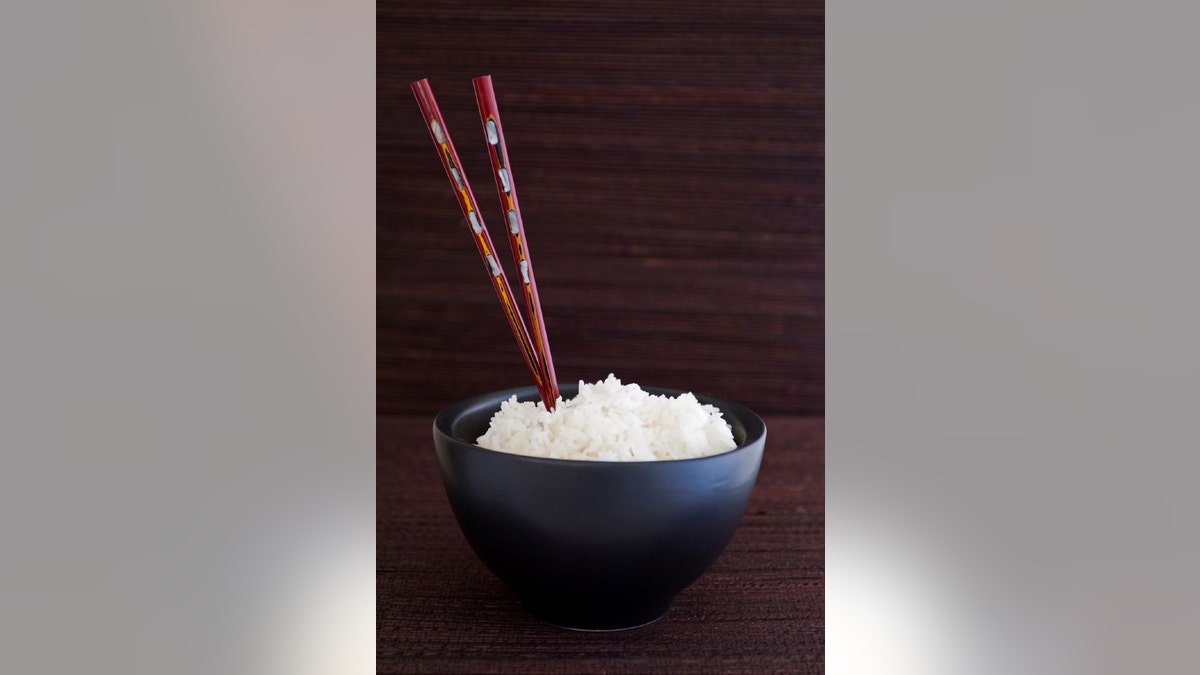You have good manners, right?
After all, you (usually) keep your elbows off the table and say "Please pass the salt," right? But when you head abroad, things get a little more complicated. Case in point: Rest your chopsticks the wrong way, and you might remind a Japanese friend of their grandmother's funeral (Rule 2). But knowing what the etiquette rules are won't just save you from some awkward situations, says Dean Allen Foster, author of the Global Etiquette Guide series. It can also help you make friends. "It's really a statement of your openness and awareness of the fact that the people you're with... may in fact see the world differently," he says. "It's simply going to get you out of the tourist bubble."
Sound good? Then here are a few rules to keep in mind.
1. In Thailand, don't put food in your mouth with a fork.

Shot of a beautiful young woman biting on a fork (iStock)
Instead, when eating a dish with cooked rice, use your fork only to push food onto your spoon. A few exceptions: Some northern and northeastern Thai dishes are typically eaten with the hands—you'll know you've encountered such a dish if the rice used is glutinous or "sticky." Also, stand-alone items that are not part of a rice-based meal may be eaten with a fork. But, says Leela Punyaratabandhu, a food writer who blogs at SheSimmers.com, the worst thing to do at a traditional, rice-based meal would be to use chopsticks. "That is awkward and inconvenient at best and tacky at worst," she says.
2. In Japan, never stick your chopsticks upright in your rice.

(iStock)
Between bites, your chopsticks should be placed together right in front of you, parallel to the edge of the table—and nowhere else, says Mineko Takane Moreno, Japanese cooking instructor and co-author of Sushi for Dummies. (If there is a chopsticks rest, you use it, putting the tips you've been eating with on the rest.) But sticking them upright in a bowl of rice is even worse: During funerals in Japan, the rice bowl of the deceased is placed before their coffin... with their chopsticks upright in the rice. So what would she rather see: Someone doing that at a meal, or asking for a fork? Mineko doesn't hesitate. "Asking for a fork," she says.
3. In the Middle East, India and parts of Africa, don't eat with your left hand.

(iStock)
In South India, you shouldn't even touch the plate with your left hand while eating. That's largely because the left hand is associated with, um, bodily functions, so it's considered to be dirty. In fact, says Foster, don't even pass important documents with your left hand. A lefty? Then it's okay to use your left hand—as long as you take your right hand out of the game.
4. At a traditional feast in Georgia, it's rude to sip your wine.

(iStock)
At what Georgians call a supra (traditional feast), wine is drunk only at toasts. So wait for those... and then down the whole glass at once. On the upside, says Georgia-based photographer and videographer Paul Stephens, the glasses tend to be on the small side.
See more need-to-know global dining customs.
More from Budget Travel
#BTRoadTrip: San Diego to Tucson
Outrageous Driver Confessions! Cursing, Speeding, and Other Bad Behavior




















